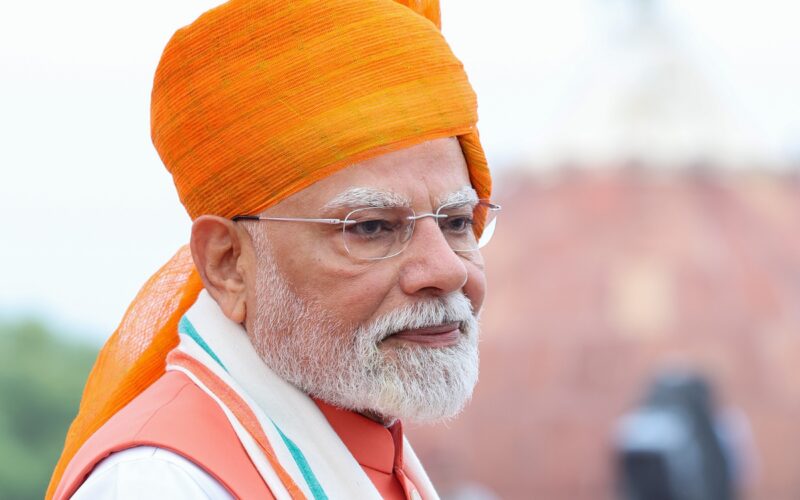#PMModi #DelhiInfrastructure #DwarkaExpressway #UERII #NationalHighways #Connectivity #Decongestion #EaseOfLiving #UrbanMobility #NCRDevelopmen
New Delhi: Prime Minister Narendra Modi will inaugurate two major highway projects worth nearly ₹11,000 crore in Delhi on August 17, 2025, at around 12:30 PM in Rohini. The projects — the Delhi section of the Dwarka Expressway and the Urban Extension Road-II (UER-II) — are part of the Government’s comprehensive plan to decongest the National Capital Region (NCR) and provide multi-modal connectivity.
The Prime Minister will also address a public gathering on the occasion, highlighting how these projects will redefine Delhi’s infrastructure landscape and boost ease of living.
A Landmark Step in Delhi’s Infrastructure Push
Both projects have been developed with the aim of easing traffic congestion, cutting travel time, and enhancing connectivity in Delhi and adjoining areas. The initiatives are in line with the Government’s vision of creating world-class infrastructure to support rapid urbanization, industrial growth, and seamless mobility across the NCR.
The total investment in the two projects stands at nearly ₹11,000 crore — with the Dwarka Expressway’s Delhi section costing about ₹5,360 crore and the UER-II stretch developed at around ₹5,580 crore.
Delhi Section of Dwarka Expressway
The much-awaited Dwarka Expressway is one of the most ambitious infrastructure projects in the NCR. While its 19 km Haryana section was inaugurated by the Prime Minister in March 2024, the 10.1 km Delhi section is now ready for public use.
This stretch, costing around ₹5,360 crore, will provide seamless connectivity and act as a critical link between Delhi and Gurgaon. It has been designed with modern engineering solutions, including elevated corridors, underpasses, and interchanges, ensuring smooth traffic flow.
The Delhi section comprises two packages:
-
Package I: 5.9 km stretch from Shiv Murti intersection to the Road Under Bridge (RUB) at Dwarka Sector-21.
-
Package II: 4.2 km stretch from Dwarka Sector-21 RUB to the Delhi-Haryana Border, which also provides direct connectivity to the Urban Extension Road-II.
Importantly, the project will offer multi-modal connectivity to several hubs: Yashobhoomi Convention Centre, DMRC Blue and Orange Metro lines, the upcoming Bijwasan Railway Station, and the Dwarka Cluster Bus Depot. This integration will make commuting more efficient for lakhs of daily travelers.
Urban Extension Road-II (UER-II)
The second major project to be inaugurated is the Alipur to Dichaon Kalan stretch of the Urban Extension Road-II (UER-II), along with new spurs connecting to Bahadurgarh and Sonipat. Developed at an approximate cost of ₹5,580 crore, this project is a game changer for Delhi’s road infrastructure.
UER-II is designed to decongest the city’s busy corridors, particularly the Inner Ring Road, Outer Ring Road, Mukarba Chowk, Dhaula Kuan, and NH-09. By diverting through traffic, the project will significantly reduce bottlenecks within the capital.
The newly built spurs will also improve industrial connectivity by providing direct access to Bahadurgarh and Sonipat. This will not only facilitate smoother movement of goods but also help boost trade and manufacturing activity in NCR’s rapidly growing industrial hubs.
Benefits for Delhi-NCR
The combined impact of these two projects will be transformative for the capital region:
-
Reduced Congestion: Major choke points like Dhaula Kuan, Mukarba Chowk, and key ring roads will witness smoother traffic flow.
-
Improved Travel Time: Faster access between Delhi, Gurgaon, Sonipat, and Bahadurgarh will save significant travel hours daily.
-
Boost to Logistics: Seamless goods movement will cut logistics costs and improve supply chain efficiency for industries.
-
Multi-modal Integration: Better connectivity with metro lines, railway stations, and bus depots will enhance commuter convenience.
-
Ease of Living: The projects align with the government’s push to make urban mobility stress-free and environmentally sustainable by reducing vehicular emissions through decongestion.
A Vision of World-Class Infrastructure
These highway projects are not standalone efforts but part of a larger national strategy to upgrade India’s road network and transform urban mobility. Over the past decade, the Modi government has emphasized rapid expansion of expressways, economic corridors, and smart urban infrastructure.
By integrating these projects into Delhi’s transport system, the government hopes to provide relief to residents struggling with traffic congestion, while simultaneously supporting economic activity in NCR.
The inauguration on August 17 marks another milestone in India’s infrastructure growth story, reflecting the government’s determination to deliver future-ready, world-class highways for its citizens.
Hashtags
#PMModi #DelhiInfrastructure #DwarkaExpressway #UERII #NationalHighways #Connectivity #Decongestion #EaseOfLiving #UrbanMobility #NCRDevelopment #HighwayProjects #IndiaInfra #MakeInIndia #GrowthStory

